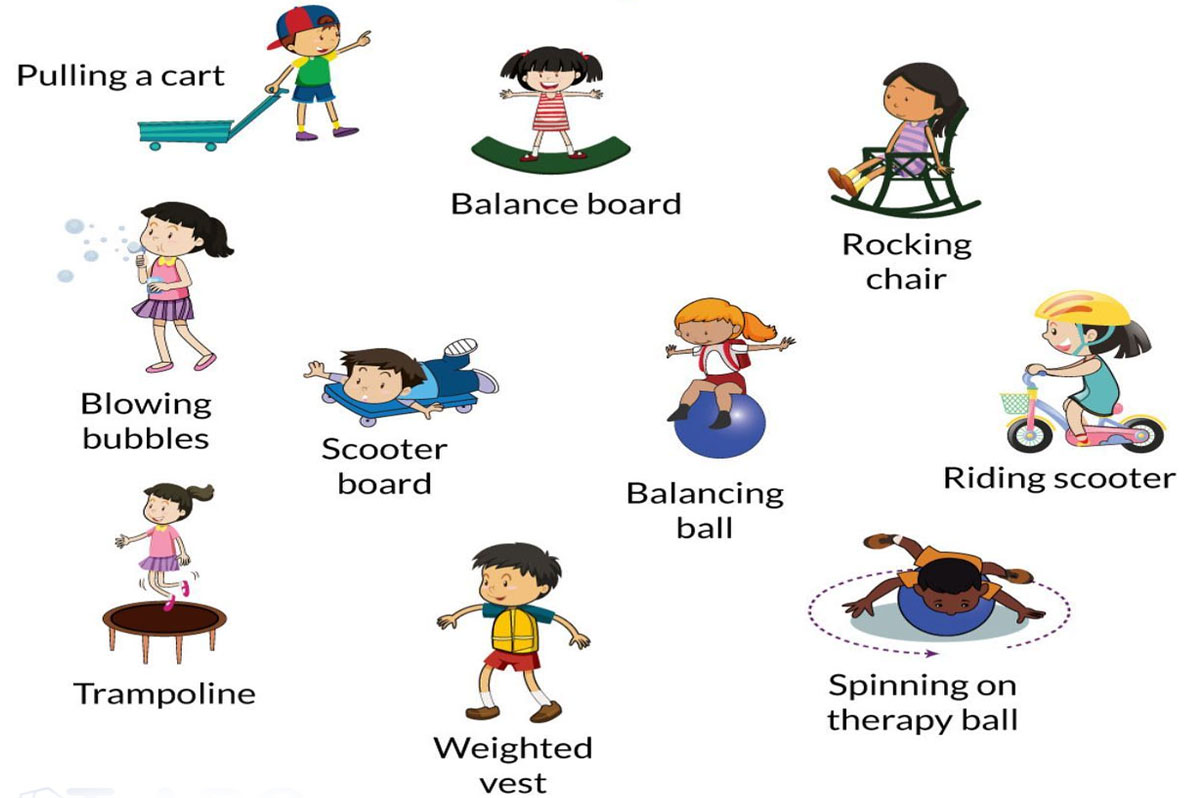
A BALANCED SENSORY DIET
A balanced sensory diet is defined as a planned and scheduled -activity programme that an occupational therapist develops specifically to meet the needs of the individual's own nervous system. Its purpose is to help the person become more focused, adaptable and skilful.
Just as the five main food groups provide daily nutritional requirements, a daily sensory diet fulfills physical and emotional needs. The individual with SI Dysfunction needs an individualized diet of tactile, vestibular, and proprioceptive nourishment more than most but doesn't know how to get it. So, we must and can help.
A sensory diet includes a combination of alerting, organizing, and calming activities. An alerting or calming activity may come first, depending on the individual's needs.
Alerting activities benefit the undersensitive individual, who needs a boost to become effectively aroused. Some examples are:
- Crunching dry cereal, popcorn, chips, crackers, nuts, pretzels, carrots, celery, apples or ice cubes
- Taking a shower
- Bouncing on a therapy ball
- Jumping up and down on a trampoline
Organizing activities help regulate the individual's responses. They include:
- Chewing granola bars, fruit bars, liquorice, dried apricots, cheese, gum, bagels or bread crusts
- Hanging by the hands from a chinning bar
- Pushing or pulling heavy loads
- Getting into an upside down position
Calming activities help the oversensitive individual decrease hyper-responsiveness to sensory stimulation. They include:
- Sucking a hard candy, frozen fruit, or spoonful of peanut butter
- Pushing against walls with the hands, shoulders, back, buttocks, and head
- Rocking, swaying, or swinging slowly back and forth
- Deep pressure massage
- Taking a bath
